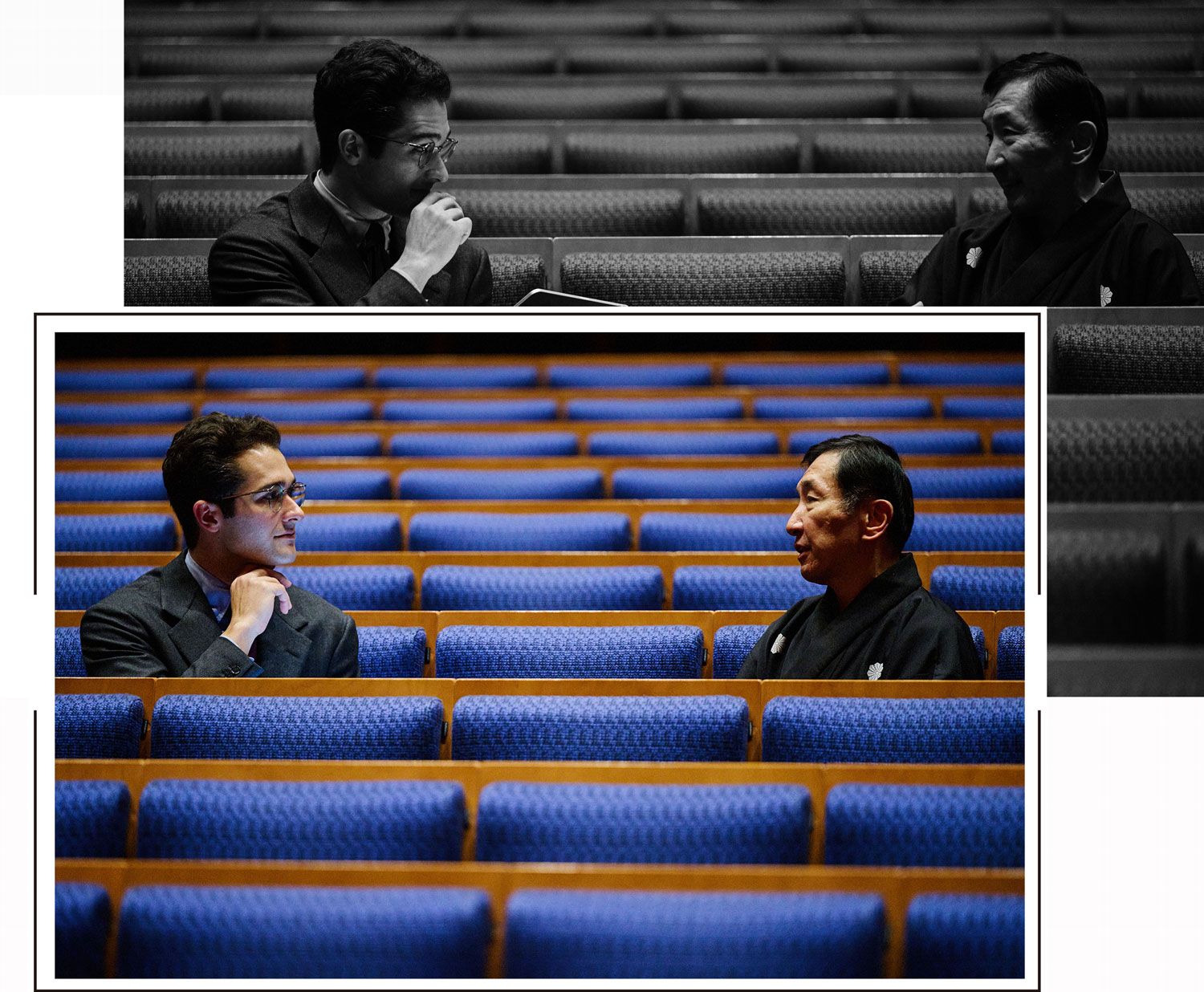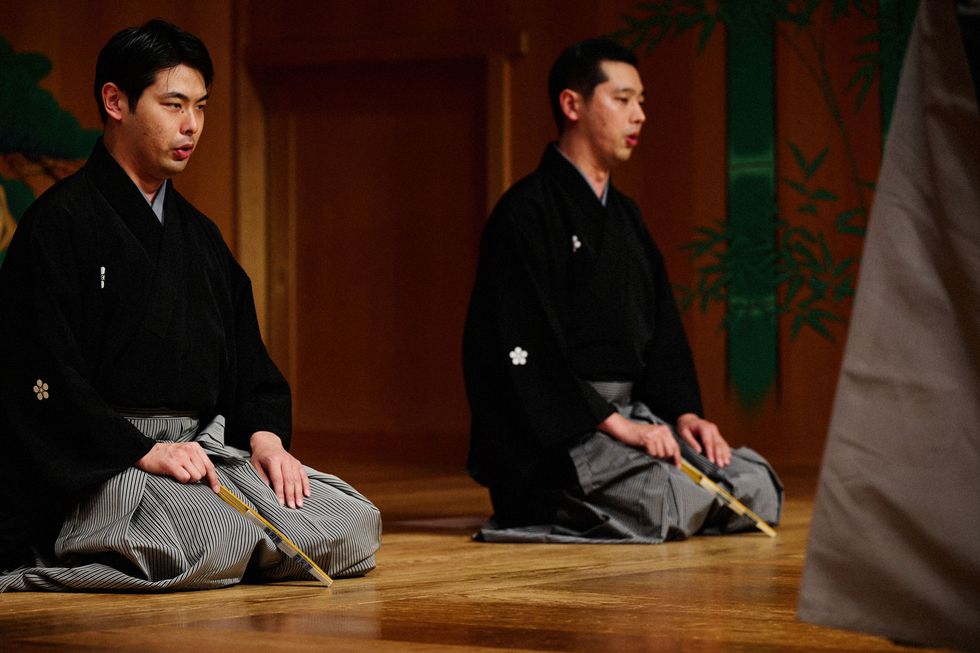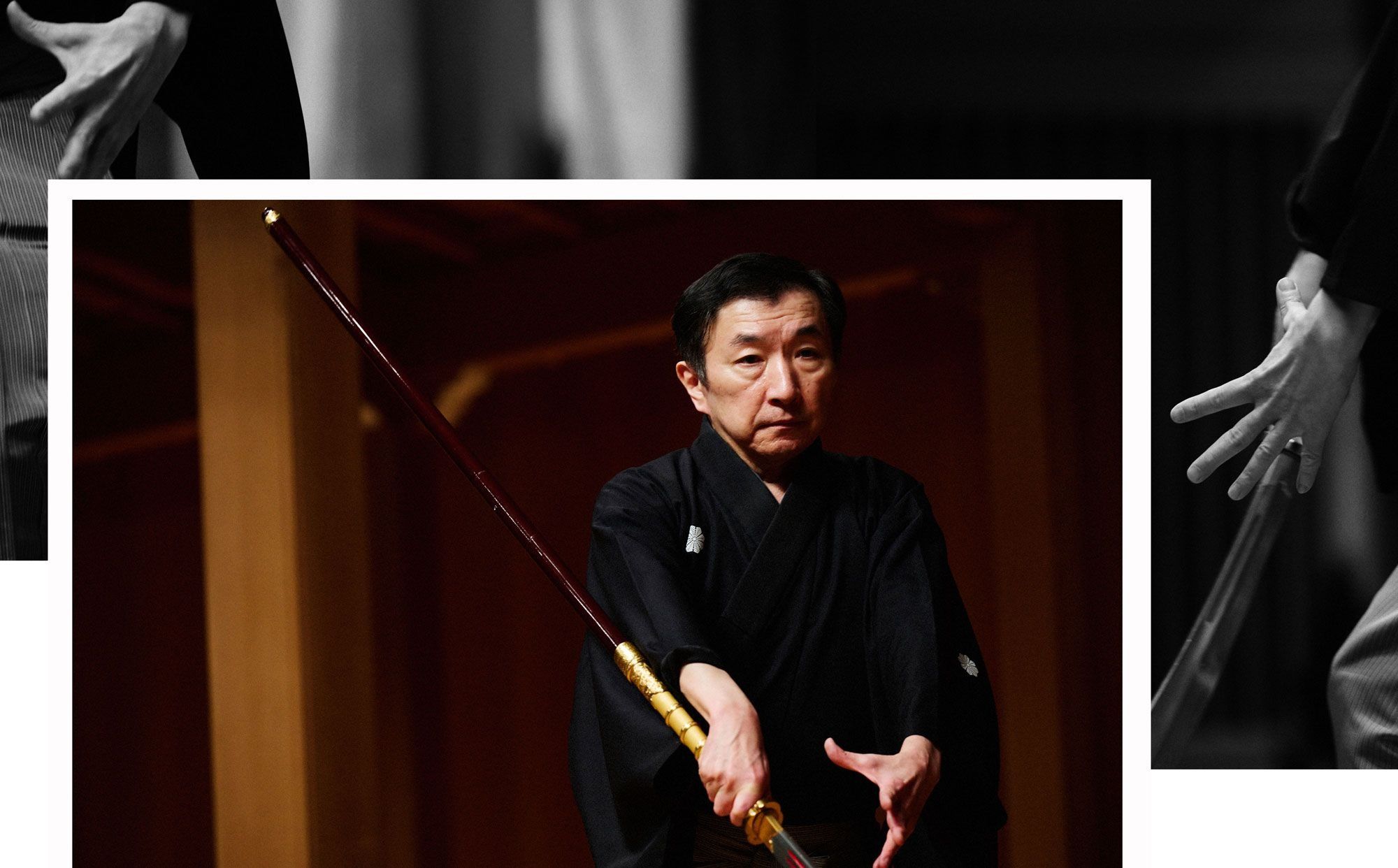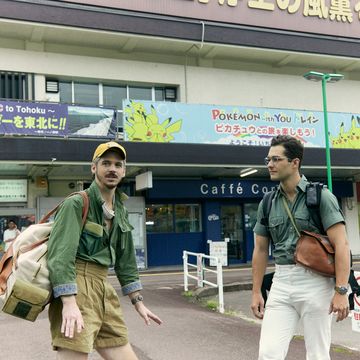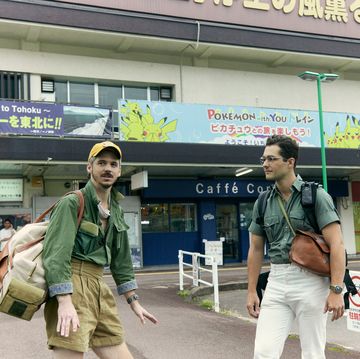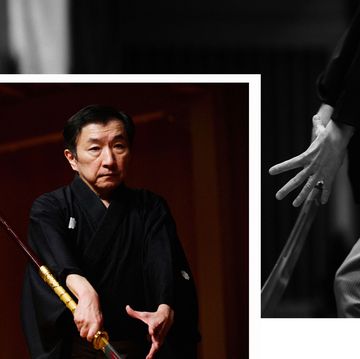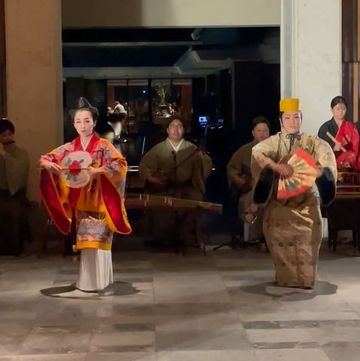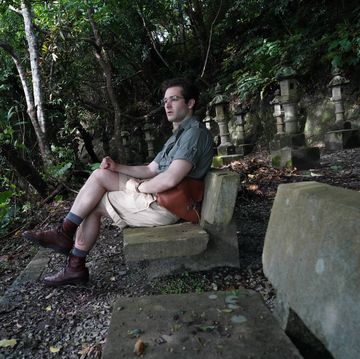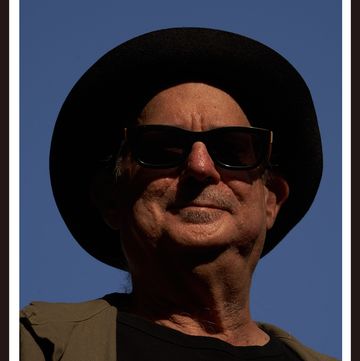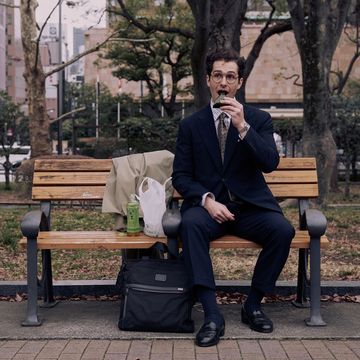In conjunction with a special lecture on Noh(能)*1 theater by the Kanze(観世) School and Yamashina Yaemon, an interview was conducted with Master Yamashina. For this interview, Christopher Berry, the Tokyo correspondent for Esquire Japan, was primarily concerned with the appeal of traditional Japanese performing arts such as Noh, Kyōgen(狂言)*2 , and Kabuki, as well as what can be learned from the classical performing arts by incorporating them into our daily lives. We delve into the charm of Noh theater in partnership with the credit card company Diners Club, which offers experiences in Japanese traditional culture to its members,
Diners Club opens a "Diners Club Culture Lab" each season as a venue for "learning," "experiencing," and "encountering" that is not easily available in everyday life. This time, we had the opportunity to interview Master Yamashina in conjunction with the special lecture on Noh theater by the Kanze School.
*1:Noh(能) is a major form of classical Japanese dance-drama that has been performed since the 14th century.
*2:Kyōgen (狂言) is a form of traditional Japanese comic theater. It developed alongside Noh, was performed along with Noh as an intermission of sorts between Noh acts on the same stage, and retains close links to Noh in the modern day.
Christopher Berry, the Tokyo correspondent for Esquire Japan, has a column series called "Scent of Japan" where he objectively examines "the current state of Japan" and "Japanese society" from his unique perspective. A true New Yorker, he grew up in Manhattan's Upper East Side and earned a master's degree in Japanese at the University of Pennsylvania before working in Tokyo. His wandering journey in search of "The Scent of Japan" is filled with love and sometimes takes a critical (diverse and logical/objective) perspective. Please enjoy.
What is Noh theater?
Noh theater is a traditional Japanese performing art consisting of "Noh" and "Kyōgen " (and including "Shikisanba 式三番 *3"). The type of Noh theater that Master Yamashina inherits is the "Noh" of the Kanze School.
Noh theater is a stage art based on classical stories and mythology. By the way, "Kyōgen " is performed between "Noh" performances and is a refined comic play that adds satire and humor. This series of "Noh theater" is said to have originated from the court of the Heian period and is particularly highly regarded as a part of Japan's traditional culture, receiving high praise worldwide.
According to the official website of the Noh Theater Association, "Noh" and "Kyōgen " are "stage arts that have been performed for approximately 650 years since the Muromachi period, representing Japan." "They were loved by many military commanders such as Toyotomi Hideyoshi and Tokugawa Ieyasu in the past, and now they are registered with UNESCO's Intangible Cultural Heritage status, and are highly valued overseas."
*3:Shikisanba(式三番) is a classical Japanese Noh play that is inspired by the classical Japanese novel "The Tale of Genji." In this play, the main character, a male Noh actor portraying the role of Hikaru Genji, is dressed in a beautiful costume and performs a unique dance to the accompaniment of traditional Japanese music. The story portrays Hikaru Genji grieving the loss of his wife, Lady Murasaki, and having a poignant conversation with her spirit.
The performance consists mainly of the "Shite" (actor)'s song and dance, with supporting roles such as “Tsure”, “Waki”, and “Ai Kyōgen ”, accompanied by “Jiutai” (people who sing and stand at the edge of the stage) and “Hayashi” (flutes, small drums, and taiko drums used to add rhythm to the songs and Noh plays). It is a musical play and masked drama. If you want to know more about the history of "Noh theater", please click here.
Profile: Yamashina Yaemon - The 12th head of the Kanze family in the Noh theater Kanze School. He is a holder of the important intangible cultural property designation for the Kanze School Shite style. He is the second son of Kanze Sakon, the 25th head of the Kanze School. In 2007, he took on the name Yamashina Yaemon for the first time in 200 years. He became the head of the Yamashina family, a prestigious family of the Omi Sarugaku with an unbroken lineage from the Muromachi period. He received the Excellence Award in the 40th Traditional Culture Pola Prize in 2020. He is the Vice Chairman of the Kanze Association, Executive Director of the Kanze Library, and Noh instructor at the National Noh Theater.
Interview with Yamashina Yaemon, Master
On a cold and gray Wednesday, I (the author, Berry) headed to the "Kanze Noh Theater" located on the 3rd floor of GINZA SIX. I never imagined that a Noh stage would be located in a glass-covered luxury shopping center. However, when I descended by escalator to the underground 3rd floor of the modern marble-adorned building I was quietly and unassumingly met by a Hinoki stage surrounded by a veranda paved with pebbles (which I later learned was called "Shirasu"). It was as if it had laid “in situ” as someone's residence for hundreds of years.
When I took my seat, the head of the Kanze family, Yamashina, greeted me and after a brief self-introduction, I was able to learn about the story of "Tokugawa Ieyasu and Kanze Daisuke" and practice singing with the Diners Club participants. The entire experience felt like a dream.
As the Jutai (a person who sings and stands on the edge of the stage) threw himself into the song and the excitement, Yamashina waved his Naginata (a type of halberd) and danced against the "Kagami-ita" backdrop with a large depiction of an old pine tree. When I was young, my mother often took me to watch operas and "The Nutcracker" in New York, but as I watched Yamashina's dance, memories of those times suddenly came flooding back.
In fact, I had never seen a performance at a Noh theater until that day. "Seeing is believing," and although I had studied classical Japanese in graduate school in America, when I saw Yamashina's dance on the Noh stage, I felt that all my preparation and study was for naught. The stoic and elegant production gave my imagination room to expand with each gesture on stage. The flow of time felt far more immediate than in any European theater of the same era that I had ever seen.
Christopher Berry from the Esquire editorial team (hereinafter referred to as "Editorial Dept."): Many people are overwhelmed by the "aesthetics unique to Noh", but if you have ever felt difficulty and agony in expressing yourself using the limited human body, how would you characterize that?
Yamashina Yaemon (hereinafter referred to as "Yamashina"): The most difficult thing about the Noh expression is that we wear a "Noh mask", so we cannot show our true face. If we could show our true face, we could express emotions such as "delight", "sadness", and "pain". However, since the "Noh mask" is made of wood, it is very difficult to express emotions, and we must express them from the heart.
Editorial Dept.: Business, entertainment, and other things in the world tend to emphasize "empathy". When people hear "Noh", many people may perceive it as an art cut off from everyday life and society.
Yamashina: Noh has the philosophy of "valuing nature" and "valuing communication between people", but I think that these tenets are becoming less and less felt in modern society, especially in cities. This Ginza area is surrounded by tall buildings, so there are few opportunities to see forests or mountains. However, I believe that it is important for humans to have such experiences and that they are originally inherent in our hearts.
Editorial Dept.: Do you think that we can learn something from "Noh" and incorporate it into our daily lives?
Yamashina: I think that many things can be learned from the actions leading up to the Noh stage. For example, when you entered the dressing room with the Diners Club members earlier, you took off your shoes before entering. And when you went on the Noh stage, you wore tabi socks. Of course, taking off shoes when going on tatami mats is a common Japanese custom, but I have a story from when I visited France. When I visited the home of a French friend, all of the French friends took off their shoes at the entrance. In other words, Japanese customs are also incorporated into everyday life abroad, because they are also hygienic.
Additionally, during the previous lesson, we sat in the "Seiza(正座)*4" position, which has also recently been re-examined. For example, I think there are people who suffer from lower back pain all day sitting in a chair due to teleworking or desk work. Sitting in the correct “Seiza” position can alleviate lower back pain, by improving the uneven use of the legs that leads to poor blood flow.
*4:Seiza(正座) is the formal, traditional way of sitting in Japan. It involves a specific positioning and posture in a kneeled position to convey respect, particularly toward elders. It developed among samurai during the Edo period and was widely adopted by the public during the Muromachi period.
Editorial Dept.: I see. So, even outside the stage, it is possible to incorporate "Noh" philosophy and actions into our daily lives.
Yamashina Shi:"Noh" is also being used in educational settings now. For example, there is a rule in "Noh" that even if a samurai comes out with a sword, you can’t direct the actor to "kill someone" in the performance.
Editorial Dept.: How do you direct the performance, then?
Yamashina Shi: Instead of directing the sword towards someone, the actor raises it and shakes it towards the front where nobody is present. That way, we can depict a scene of killing someone. That is the etiquette of "Noh" performing art.
Editorial Dept.: The way you channel violent acts into "Noh" is very interesting.
Yamashina Shi: I am planning to perform "Noh" in the future with the message that "war is a tragic thing. It is something that should never be done." This is not only in the world of "Noh", but also a universal theme in arts such as ballet.
Editorial Dept.: Finally, when modern people experience "Noh" for the first time, how would you like them to enjoy it?
Yamashina Shi: As I explained in today's "Diners Club Culture Lab" lesson, I think you learned that there are two types of "Noh": "Noh" that requires advanced skills to fascinate with storytelling alone and "Noh" that uses many tools to make it visually easy to understand for modern people.
Editorial Dept.: What do you mean?
Yamashina Shi: Ballet doesn't have any lines, right? In "Noh," there are lines in old language, so even modern people may not understand what is being said. So when you watch "Noh," instead of being bound by the lines, you focus on the movements of the body like in ballet and receive the expression of the body with your senses. Even first-time viewers can enjoy it. It's okay not to understand. It's okay to get sleepy. I hope you'll watch "Noh" at least once without fear.
Editorial Dept.: It's very difficult but important to cultivate your senses.
Yamashiro Shi: Our stage is what we call an "analog" stage. In the world, this "analog" thing is disappearing from our lives more and more. When virtual spaces like the metaverse become commonplace, there may be a time when everything can be done without moving the body, and everything can be done in a virtual space. When everything is digitized, as I mentioned earlier, I have a sense of crisis that the "importance of nature" and "human-to-human interaction" that are the roots of "Noh" will be lost... and that humanity will be lost.
Editorial Dept.: It's a very difficult theme in the current age where the boundary between digital and analog is very ambiguous.
Yamashiro Shi: The other day, I had the opportunity to meet high school students at a workshop. When I asked them about their school life, they had been wearing masks for almost three years, so they couldn't imagine the lower half of their friends' faces. But in that case, the degree of sensitivity necessary for "Noh" may be useful. I was able to tell those high school students about the importance of communicating with your heart even when wearing a Noh mask.
Editor’s note:
After the interview...
What was very impressive to me (the author, Berry) was Yamashiro's words, "I want you to watch it at least once." Even in the short lecture on this day, I was able to feel the depth of "Noh"... While "Noh" may be difficult for many people to approach, its character and story are elemental and can be perceived without linguistic knowledge or context. If you endeavor to visit a Noh theater even once and open your senses for a few hours, you will surely be rewarded with profound memories that last a lifetime.
